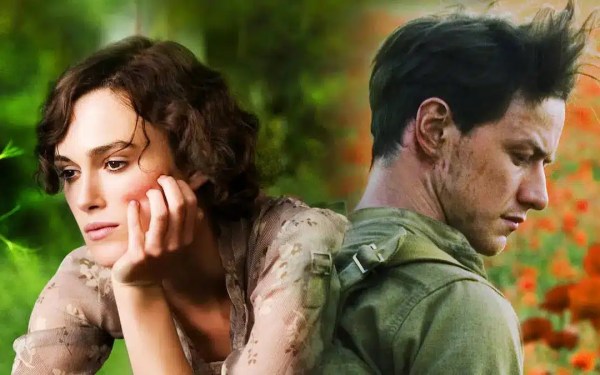Review: The Picture Of Dorian Gray by Oscar Wilde

Disclaimer
This post may contain affiliate links. I will make a small commission if you make a purchase through one of these links, at no extra cost to you. See full disclosure and disclaimer policy HERE.
In this article, we will explore the captivating world of Wilde’s novel, discussing its themes, characters, and the author’s unique writing style. Join me on this literary journey as we delve into the dark and thought-provoking tale of Dorian Gray.
Table of Contents
- Plot Summary | Spoiler Alert |
- Themes And Symbolism
- Character Depth And Complexity
- Wilde's Writing Style
- Conclusion
- FAQs
Plot Summary | Spoiler Alert |
The Picture of Dorian Gray tells the story of a young man named Dorian Gray who becomes infatuated with the idea of eternal youth and beauty. The novel begins with Dorian meeting an artist named Basil Hallward, who is captivated by Dorian’s exquisite looks and decides to paint his portrait.
As Basil works on the portrait, Dorian becomes acquainted with Lord Henry Wotton, a witty and hedonistic aristocrat. Lord Henry influences Dorian with his provocative ideas, encouraging him to pursue a life of pleasure and indulge in his desires without considering the consequences. Dorian becomes enthralled by Lord Henry’s philosophy, believing that beauty and sensual experiences are the highest pursuits in life.
Upon seeing the finished portrait, Dorian is overwhelmed by its lifelike beauty and becomes consumed by a desire to remain forever young and untouched by the passage of time. In a moment of desperation, he wishes that the portrait would age instead of him, allowing him to preserve his youth and beauty.
The novel explores the consequences of a Faustian bargain, as Dorian trades his soul for eternal youth and beauty. What initially appears to be a blessing soon turns into a curse when his portrait begins to bear the scars of his immoral deeds, while he remains outwardly unblemished.
Themes And Symbolism
Wilde skilfully weaves several themes throughout the novel, inviting readers to reflect on the nature of concepts that corrupts and influences society:
The Pursuit of Beauty and Aestheticism
A central theme in the novel is the relentless pursuit of beauty and the worship of aesthetic values. Dorian Gray becomes obsessed with preserving his youthful appearance and indulging in a life of pleasure, valuing external beauty above all else. Wilde raises questions about the shallowness of this pursuit and the dangers of prioritising aesthetics over morality.
The Corruption Of The Soul
As Dorian Gray succumbs to a life of vice and moral decay, Wilde explores the notion of the corrupting influence of sinful behaviour. The portrait serves as a physical manifestation of Dorian’s inner sins, reflecting the degradation of his soul while he remains outwardly unblemished. The novel prompts reflection on the consequences of immoral actions and the impact they have on one’s character.
The Dual Nature of Humanity
The Picture of Dorian Gray delves into the concept of the duality of human nature, with the characters embodying both good and evil tendencies. Dorian Gray’s transformation from innocence to corruption highlights the constant battle between one’s conscience and the allure of indulgence. The novel raises questions about the capacity for both beauty and ugliness within individuals.
The Influence of Society
Wilde critiques the restrictive social norms and moral standards of Victorian society. Dorian Gray is influenced by Lord Henry’s hedonistic philosophy and the society’s emphasis on appearance, leading him to abandon his moral compass. The novel explores the power of external influences and the pressure to conform to societal expectations.
The Nature of Art
Through the character of Basil Hallward, an artist, Wilde examines the relationship between art and reality. Basil’s portrait captures the true essence of Dorian Gray, revealing the hidden aspects of his soul. The novel raises questions about the responsibility of artists, the role of art in reflecting or distorting reality, and the potential dangers of art that delves into the darker aspects of humanity.
Character Depth And Complexity
Wilde’s characters are richly developed, each with their distinct personalities and motivations.
Dorian Gray is a fascinating protagonist, lured by the allure of eternal youth and gradually descending into moral decay.
Lord Henry Wotton, the charismatic influencer, acts as a catalyst in Dorian’s transformation, providing him with a hedonistic philosophy that encourages him to live without consequences.
Basil Hallward, the artist who painted the fateful portrait, represents the conscience struggling against the forces of corruption.
Wilde’s Writing Style
Oscar Wilde’s writing style is characterised by his wit, clever wordplay, and incisive social commentary. He effortlessly blends humour and tragedy, immersing readers in a world filled with sharp dialogue and memorable one-liners.
Wilde’s use of metaphors and analogies enriches the narrative, inviting readers to contemplate the deeper meanings hidden within his prose. His writing possesses a timeless quality that continues to resonate with audiences today.
RELATED:
Why You Should Read Oscar Wilde: His Best Works
Conclusion
The Picture of Dorian Gray remains a masterpiece that transcends time. Oscar Wilde’s exploration of beauty, morality, and the human condition leaves a lasting impact on readers. The novel’s intricate characters, thought-provoking themes, and the elegance of Wilde’s prose combine to create a compelling and enduring work of literature.












